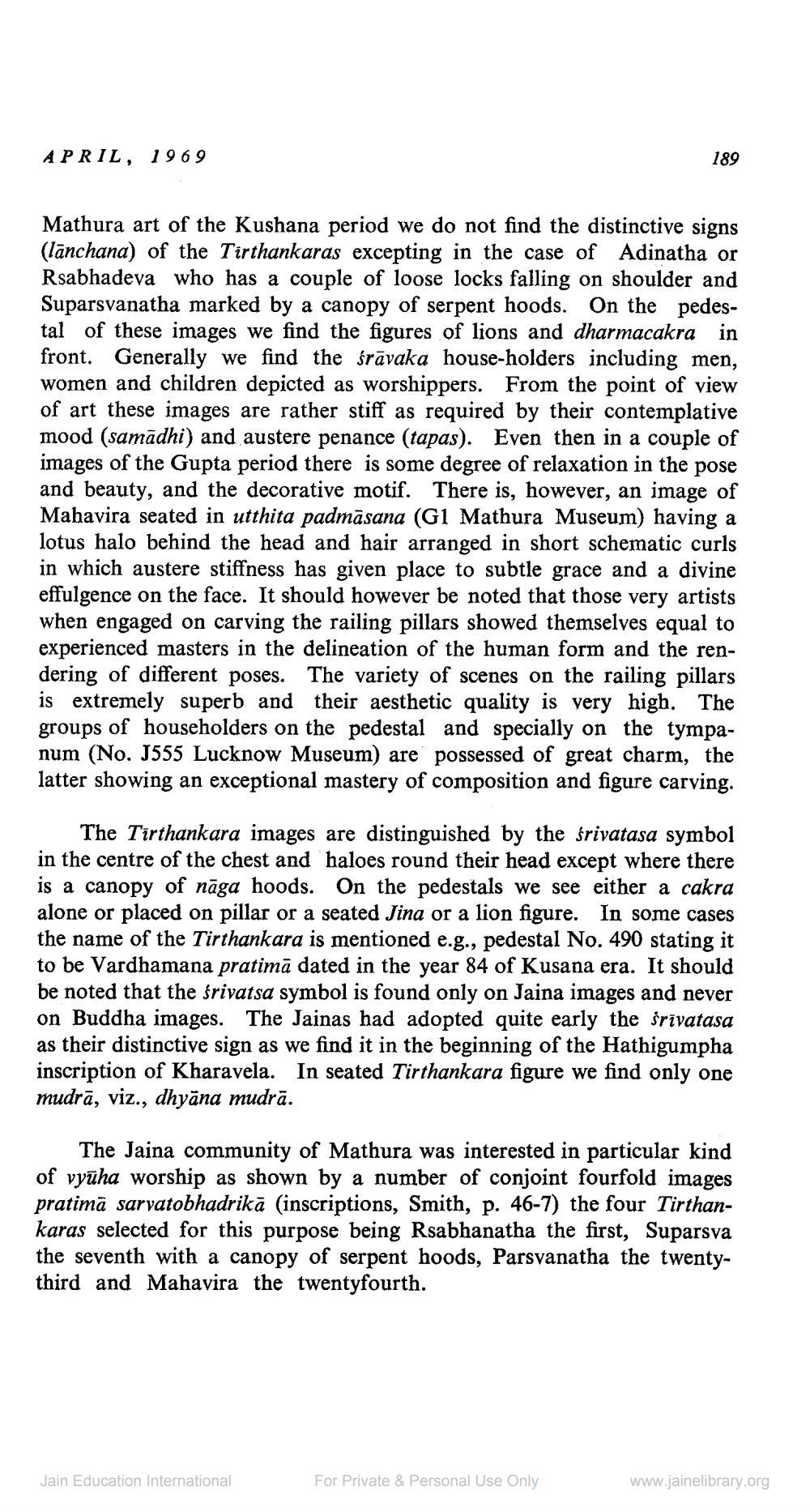________________
APRIL, 1969
189
Mathura art of the Kushana period we do not find the distinctive signs (lānchana) of the Tirthankaras excepting in the case of Adinatha or Rsabhadeva who has a couple of loose locks falling on shoulder and Suparsvanatha marked by a canopy of serpent hoods. On the pedestal of these images we find the figures of lions and dharmacakra in front. Generally we find the śrāvaka house-holders including men, women and children depicted as worshippers. From the point of view of art these images are rather stiff as required by their contemplative mood (samādhi) and austere penance (tapas). Even then in a couple of images of the Gupta period there is some degree of relaxation in the pose and beauty, and the decorative motif. There is, however, an image of Mahavira seated in utthita padmāsana (G1 Mathura Museum) having a lotus halo behind the head and hair arranged in short schematic curls in which austere stiffness has given place to subtle grace and a divine effulgence on the face. It should however be noted that those very artists when engaged on carving the railing pillars showed themselves equal to experienced masters in the delineation of the human form and the rendering of different poses. The variety of scenes on the railing pillars is extremely superb and their aesthetic quality is very high. The groups of householders on the pedestal and specially on the tympanum (No. 3555 Lucknow Museum) are possessed of great charm, the latter showing an exceptional mastery of composition and figure carving.
The Tirthankara images are distinguished by the śrivatasa symbol in the centre of the chest and haloes round their head except where there is a canopy of nāga hoods. On the pedestals we see either a cakra alone or placed on pillar or a seated Jina or a lion figure. In soj the name of the Tirthankara is mentioned e.g., pedestal No. 490 stating it to be Vardhamana pratimā dated in the year 84 of Kusana era. It should be noted that the śrivatsa symbol is found only on Jaina images and never on Buddha images. The Jainas had adopted quite early the śrīvatasa as their distinctive sign as we find it in the beginning of the Hathigumpha inscription of Kharavela. In seated Tirthankara figure we find only one mudrā, viz., dhyāna mudrā.
The Jaina community of Mathura was interested in particular kind of vyūha worship as shown by a number of conjoint fourfold images pratimā sarvatobhadrikā (inscriptions, Smith, p. 46-7) the four Tirthankaras selected for this purpose being Rsabhanatha the first, Suparsva the seventh with a canopy of serpent hoods, Parsvanatha the twentythird and Mahavira the twentyfourth.
Jain Education International
For Private & Personal Use Only
www.jainelibrary.org




